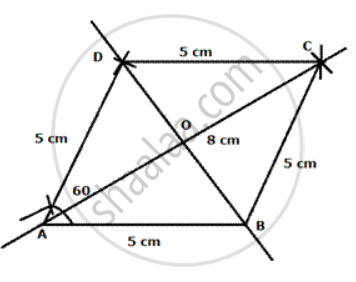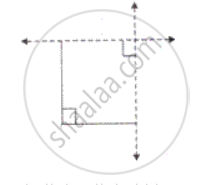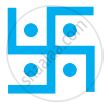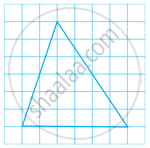Advertisements
Advertisements
प्रश्न
Construct a rhombus ABCD with AB= 5.0 cm and AC= 8 cm. Draw its lines of symmetry.
उत्तर

Steps of construction :
(i) Draw a line segment AB = 5 cm
(ii) With A as centre and radius 8 cm, and 8 as centre and radius 5 cm, draw arcs which intersect each other at C.
(iii) Join AC and BC.
(iv) Again with centre A and C and radius 5 cm, draw arcs which intersect each other at D
(v) Join AD and CD. ABCD is the required rhombus.
(vi) Join BO.
Two diagonals AC and BO are the lines of symmetry .
APPEARS IN
संबंधित प्रश्न
Use graph paper for this question) (4)
A(0, 3), B(3, −2) and O(0, 0) are the vertices of triangle ABO.
(1) Plot the triangle on a graph sheet taking 2 cm = 1 unit on both the axes.1
(2) Plot D the reflection of B in the Y-axis, and write its coordinates.
(3) Give the geometrical name of the figure ABOD.
(4) Write the equation of the line of symmetry of the figure ABOD.
Complete the following figure, about the given lines of symmetry which are shown by dotted lines and name the figure thus obtained:

Which of the following is a symmetrical figure?
Draw and answer the following.
A triangle which has no line of symmetry
Draw and answer the following.
A triangle which has only one line of symmetry
The number of lines of symmetry in a rectangle and a square are ______ (equal/unequal).
The image of a point lying on a line l with respect to the line of symmetry l lies on ______.
If an isosceles triangle has more than one line of symmetry, then it need not be an equilateral triangle.
Find the number of lines of symmetry for the following shape:

Copy the triangle in the following figure on squared paper. Draw the line(s) of symmetry, if any and identify the type of triangle. (Some of you may like to trace the figure and try paper-folding first!)

